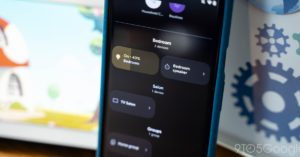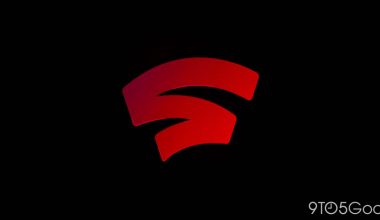The iPhone 13 Mini is one of the few powerful, tiny smartphones available in the Android environment. One of the better examples is the ASUS ZenFone 9. We’ll contrast the ASUS ZenFone 9 and Apple iPhone 13 Mini in this article. Although the ZenFone 9 is bigger than the iPhone 13 Mini, it is still rather small when compared to other smartphones now on the market.
Even if the iPhone 13 is smaller than the ZenFone 9, comparing these two smartphones still makes a lot of sense. The ZenFone 9 might be your best option if you already use an iPhone 13 Mini but want to convert to Android. We will first outline the specifications for these two phones before comparing them in a variety of areas. We’ll contrast their layouts, visuals, functionality, and other aspects. Let’s get going.
SPECS Apple iPhone 13 Mini ASUS ZenFone 9 Display size FullHD Super AMOLED display of 5.9 inches (60-120Hz refresh rate) FullHD 5.4-inch OLED display (60Hz) 2400 × 1080 screen resolution 2400 x 1080 SoC Apple A15 Bionic RAM 8GB/16GB Apple Snapdragon 8 Gen1 (LPDDR5) 128GB/256GB (UFS 3.1), non-expandable 128GB/256GB/512GB, non-expandable 4GB Storage backup cameras Gimbal OIS, 1.0um pixels, f/1.9 aperture, 23.8mm wide-angle lens, PDAF) 113-degree field of view, f/2.2 aperture, 1.4um pixel size, and 14.4mm lens; 12 MP 26mm lens, dual pixel PDAF, f/1.6 aperture, 1.7um pixel size, sensor-shift OIS, 12MP 12MP (f/2.4, 120-degree field of view, 13mm, ultrawide) entrance cameras Dual-pixel PDAF, f/2.5 aperture, 1.22um pixels, and 27.5mm lens; 12MP f/2.2, a 23mm wide-angle lens, and 12 MP Non-removable 4,300mAh battery; 30W wired charging (charger included) Non-removable 2,438mAh battery with 20W fast charging, 15W MagSafe wireless charging, and 7.5W Qi wireless charging. Size 131.5 x 64.2 x 7.7mm 146.5 x 68.1 x 9.1mm 169 grams and 141 grams Connectivity USB Type-C, USB Type-L, 5G, LTE, NFC, Bluetooth 5.2, Wi-Fi, and Lightning Security fingerprint scanner on the side Price 799 $699 Face ID OS Android 12ZneUI iOS 15 Obtain ASUS Apple Apple iPhone 13 Mini vs. ASUS Zenfone 9: Design Both the appearance and hand feel of these two phones differ. Metal makes up the frame of the ZenFone 9 while the back is comprised of polymer (plastic). The back, however, should be noted as feeling more like very soft vegan leather than than plastic. It’s hard to describe, but it definitely seems stickier than glass. In contrast, the iPhone 13 Mini is comprised of metal and glass. Both phones have flat sides, but the ZenFone 9’s backplate and how it is integrated with the sides make it more comfortable to grip. Additionally, the ZenFone 9 has more grip.
Advertisement However, because the iPhone 13 Mini is smaller, using it with one hand is simpler. It is significantly less lengthy, narrower, and thinner. Furthermore, it is lighter in contrast. The bezels on both phones are quite thin. While the iPhone 13 Minis’ top notch and bottom bezel are similar, the ZenFone 9s’ bottom bezel is slightly thicker than the rest. We can’t really say that these bezels are uniform because it basically protrudes from the top bezel. The top-left display camera hole on the ZenFone 9 replaces the absence of a display notch.
Even though the designs of the two phones are somewhat different, they both have two cameras on the back. The bigger sensors on the ZenFone 9 are each an independent camera island. Both camera sensors are housed within the same camera island in the top-left corner of the iPhone 13 Mini. Along with a touchpad, the ZenFone 9 also incorporates a side-facing fingerprint scanner that serves as a power/lock key. The iPhone 13 Mini’s display notch is so big because facial recognition is how it works.
Overall, both phones feel quite high-end, but their in-hand experiences are very different. The ZenFone 9 is for you if you enjoy grippy gadgets that are incredibly comfy to hold. The iPhone 13 Mini is the best option if you adore extremely compact gadgets and prefer a glass metal feel.
Advertisement Apple iPhone 13 Mini vs. ASUS Zenfone 9: Display A 5.9-inch fullHD (2400 x 1080) Super AMOLED display is included on the ZenFone 9. That panel has a 120Hz refresh rate and is flat. With a peak brightness of 1,100 nits, it supports HDR10 content. We are looking at a 20:9 display aspect ratio here, and it is shielded by Gorilla Glass Victus.

“alt=”AM AH 09 Review of the ASUS Zenfone 9″>
On the other side, the iPhone 13 Mini has a 5.4-inch Super Retina XDR OLED display. This panel also supports HDR10 content and is flat. Additionally, it supports Dolby Vision and has a maximum brightness of 1,200 nits. But keep in mind that this panel can only operate at 60Hz. The display aspect ratio is 19.5:9, and the ceramic glass is scratch-resistant. Although this protection is impact-resistant, it is not very effective against microscopic scratches.
Advertisement They both look fantastic. They have excellent viewing angles, are sufficiently sharp, and have vibrant colors. Both panels are quite responsive, and the blacks are deep. The ZenFone 9’s 120Hz refresh rate actually makes a difference, that much is true. The scrolling experience will be more fluid, and this is true of display usage in general. Due to this, we would recommend the ZenFone 9 above the other panel despite the fact that both offer excellent image quality.
PERFORMANCE OF THE ASUS ZENFONE 9 AND THE APPLE IPHONE 13 MINI These two smartphones operate excellently. That is not at all unexpected. They are premium phones with incredibly strong internals. The Snapdragon 8 Gen 1 SoC, up to 16GB of LPDDR5, and UFS 3.1 flash storage are all present in the ZenFone 9. The Apple A15 Bionic CPU powers the iPhone 13 Mini, which also has 4GB of RAM and NVMe storage.
The two corporations utilized extremely potent chips in this situation. Both the pre-installed versions of Android 12 on the ZenFone 9 and iOS 15 on the iPhone 13 Mini are very well optimized. These two gadgets are capable of handling anything you put your phone through, including gaming. It is not difficult to play even the most difficult games that are available in their specific stores. Under load, they will warm up, but not excessively. Additionally, we didn’t notice any slowness that would be noteworthy.
Advertisement Apple iPhone 13 Mini vs. ASUS Zenfone 9: Battery Battery capacity for the ASUS ZenFone 9 is 4,300mAh. On the other hand, the iPhone 13 Mini has a 2,438mAh battery. The two operating systems handle energy use differently, and the iPhone 13 Mini also has a smaller screen and a slower refresh rate, so the difference in battery capacity is rather significant. Having said that, the ZenFone 9 has exceptional battery life compared to the iPhone 13 Mini’s average performance. At least for us, that has been the situation.
Depending on the day, the iPhone 13 Mini offered 5.5 to 6 hours of screen time. The ZenFone 9, on the other hand, had much to do and was able to exceed the 7-hour screen-on time limit. On numerous occasions, I was even able to easily exceed the 8-hour screen-on-time limit. Keep in mind that gaming was not included in the deal; it has, but only in very limited quantities. Everything else, such as web browsing, watching multimedia, using image editing software, snapping images, and so on, was also covered.
Reverse wired charging is supported on the ZenFone 9. The phone includes a charger and enables 30W wired charging. 18W wired, 15W MagSafe wireless, and 7.5W Qi wireless charging are all supported with the iPhone 13 Mini. Keep in mind, though, that Apple’s iPhone does not come with a charger.
Advertisement Apple iPhone 13 Mini vs. ASUS Zenfone 9: Cameras Three cameras are included in both of these phones, two of which are on the back. A 50-megapixel primary camera and a 12-megapixel ultrawide camera are both featured on the ZenFone 9. A 12-megapixel ultrawide camera and a 12-megapixel primary camera are included with the iPhone 13 Mini. Both phones’ cameras work admirably, though not the finest available. Additionally, the outcomes differ from comparisons.
Image 3 of the Apple iPhone 13 Mini has the alt=”AH” tag “>
While the iPhone 13 Minis are more true to life, the ZenFone 9 typically produces shots that are more saturated. Both phones’ primary and ultrawide cameras perform admirably, and on both models, they are able to maintain color harmony. On most phones, ultrawide camera colors typically differ from one another, but not on these two models. Though not regularly, the ZenFone 9 does occasionally crush the blacks. For something to occur, a particular scene is required. It wasn’t a big deal to begin with, but I’m not sure if it’s still happening after a recent update.
Advertisement Both are excellent in low light and successfully add a lot of light to a shot. Both offer excellent stabilization and video recording capabilities. In actuality, you won’t make a mistake with either camera you choose because they’ll both do the job and do it effectively.
AUDIO The audio jack is included on the ZenFone 9, unlike the iPhone 13 Mini. It’s admirable that ASUS was able to fit it inside this relatively tiny chassis. When you connect headphones to the phone, the sound quality is likewise fairly decent. The iPhone 13 Mini can also be charged, but you’ll need to utilize a lightning connection.
They both come with a pair of stereo speakers as well. In contrast, the ZenFone 9s offers 24-bit sound that is a little bit clearer. However, the difference is not that significant because both phones perform admirably in that regard. They also offer a well-balanced sound with voices that are very crisp.







